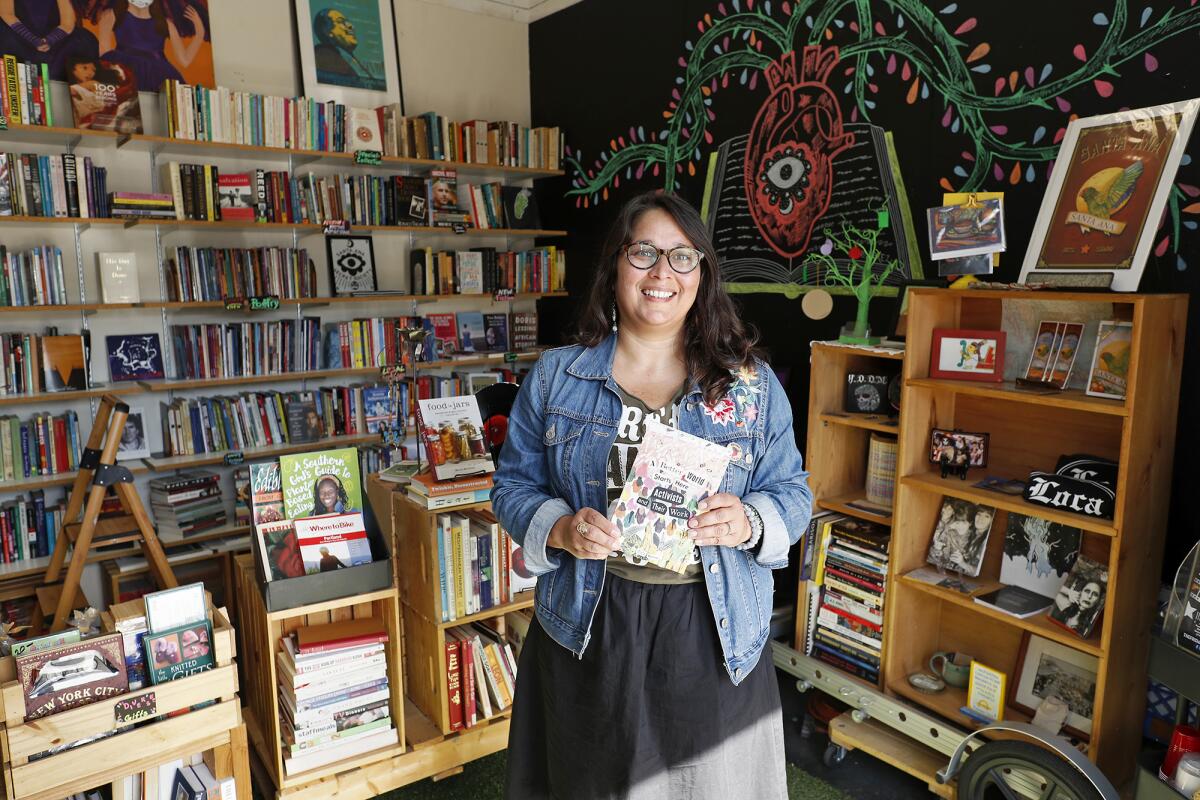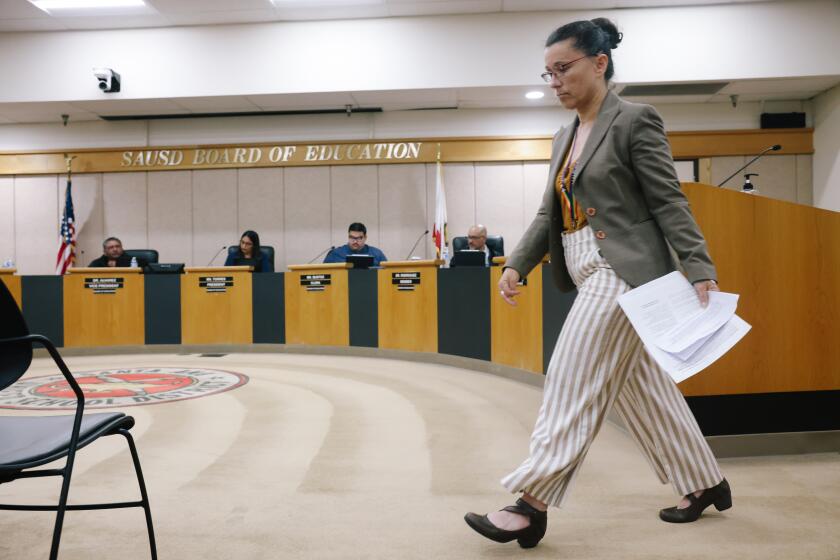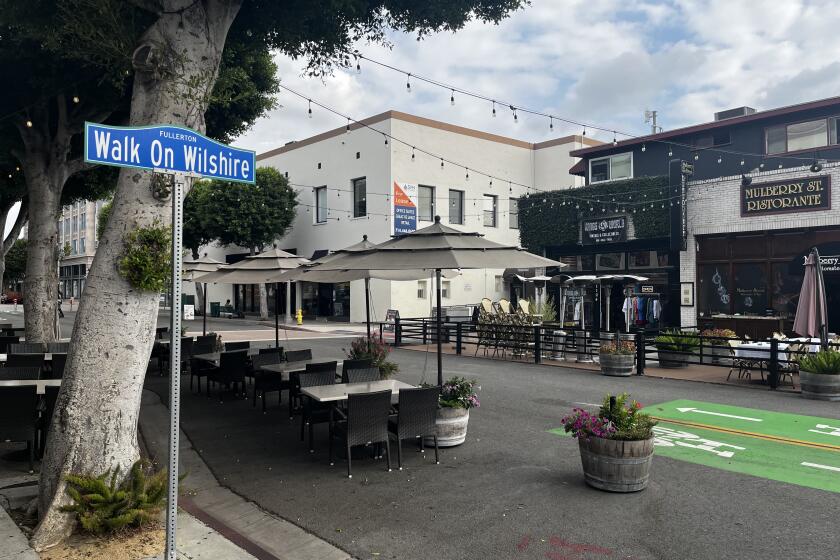Commentary: LibroMobile may be O.C.’s smallest bookstore but it’s also a symbol of growing diversity

- Share via
During the opening event of LibroMobile’s second annual literary arts festival Saturday, about a dozen children sat on a colorful mat in anticipation of Drag Queen Story Time.
LibroMobile’s founder Sarah Rafael García, a local writer, welcomed a crowd of approximately 400 throughout the day-long event in Santa Ana of live readings and performances by local and visiting artists of color.
As my toddler and I listened to Electra Young read stories about inclusivity to her young audience, my gaze wandered to the pop-up bookmobile across from us.
On the bookmobile — a repurposed gardening cart or the “original” LibroMobile — sits recent works by writers of color, bilingual and Spanish books for children and adults, small press publications and handmade zines.
It brought back memories of my first meeting with Sarah in 2017.
I remember walking with her down Calle Cuatro to a stairwell, where she stored crates full of books on either side, and then watching her push a bookcart out from the space below the stairs.
Now, LibroMobile is a bookstore in a warehouse in a back alley off 4th and Spurgeon streets, but for its first nine months, it existed on that book-laden staircase and through the mobile cart inspired by the paleteros, iconic fruit vendor carts often seen in Santa Ana.
While its ever-expanding inventory has moved from the staircase to the warehouse, the book cart continues to travel throughout the city and surrounding areas to promote literacy.
Sarah and I connected over a shared frustration that despite Orange County’s ethnocultural diversity, not enough writers of color touring across the nation drive south of the 405, beyond Los Angeles, for literary or community events.
The reason seemed obvious to us. Media narratives on O.C. rarely showed the then “red county” to have much of a literary cultural scene, let alone a scene spotlighting writers of color.
And yet, the more I got to know Sarah and her work, I learned how she and many local artists have been at work for years, subverting cultural clichés of Orange County.
Born in Texas and raised in Santa Ana, García published her debut book, “Las Niñas: A Collection of Childhood Memories,” in 2008.
The autobiographical story recounts the struggles of three second-generation Mexican American sisters.
García moved in and out of Orange County for teaching commitments, travels and graduate school, but in 2016, when she returned home, she found Santa Ana deep in the throes of gentrification.
The city she’d known in her childhood seemed to be disappearing, she said.
This led to her bilingual book, 2017’s “SanTana’s Fairytales,” where she converted the urban history of her childhood home into fables and fairytales.
Developed through a one-year artist-in-residence at OC’s Grand Central Art Center, “SanTana’s Fairytales” is a visual art installation, oral history and storytelling project that gives voice to the stories of Mexican and Mexican American residents of Santa Ana.
The collection of stories was translated into Spanish by poet Julieta Corpus, and the bilingual manuscript was published in collaboration with Raspa Magazine.
Grand Central Art Center hosted a multimedia installation based on the book in 2017, and versions of the exhibit have since traveled to Texas State University and Northwest Vista College in San Antonio.
Also an educator, García founded Barrio Writers, a creative writing program that provides free college-level education — focused on storytelling, critical thinking and social justice — to teenagers of color in Santa Ana and the neighboring cities.
The program’s summer workshops culminate with a live reading where Barrio Writers present final pieces to their community and their works are published in an annual anthology.
As I sat at the bookstore’s annual festival, I saw that things are beginning to shift in the current world of American storytelling.
Conversations on diversity are taken more seriously. The O.C. literary scene is curating more community events that seek to reflect the county’s demographic reality, but there are limits to progress if artists of color still function as tokens in white-dominant spaces.
It’s important to recognize the revolutionary community spaces that actually take practical steps toward representation and inclusion.
LibroMobile, if not the biggest, is certainly one of the most conspicuous ones in Orange County.
All the latest on Orange County from Orange County.
Get our free TimesOC newsletter.
You may occasionally receive promotional content from the Daily Pilot.



